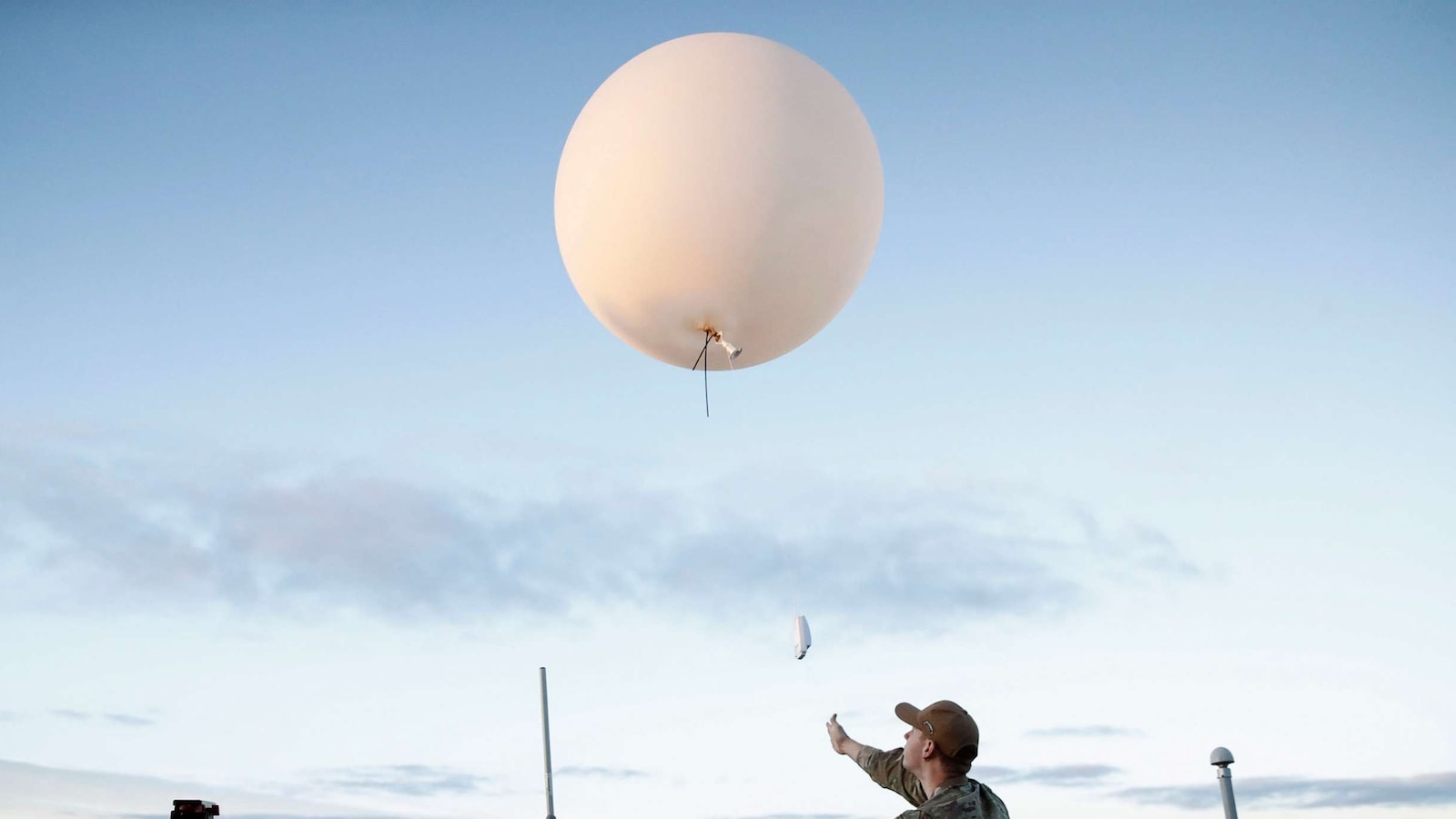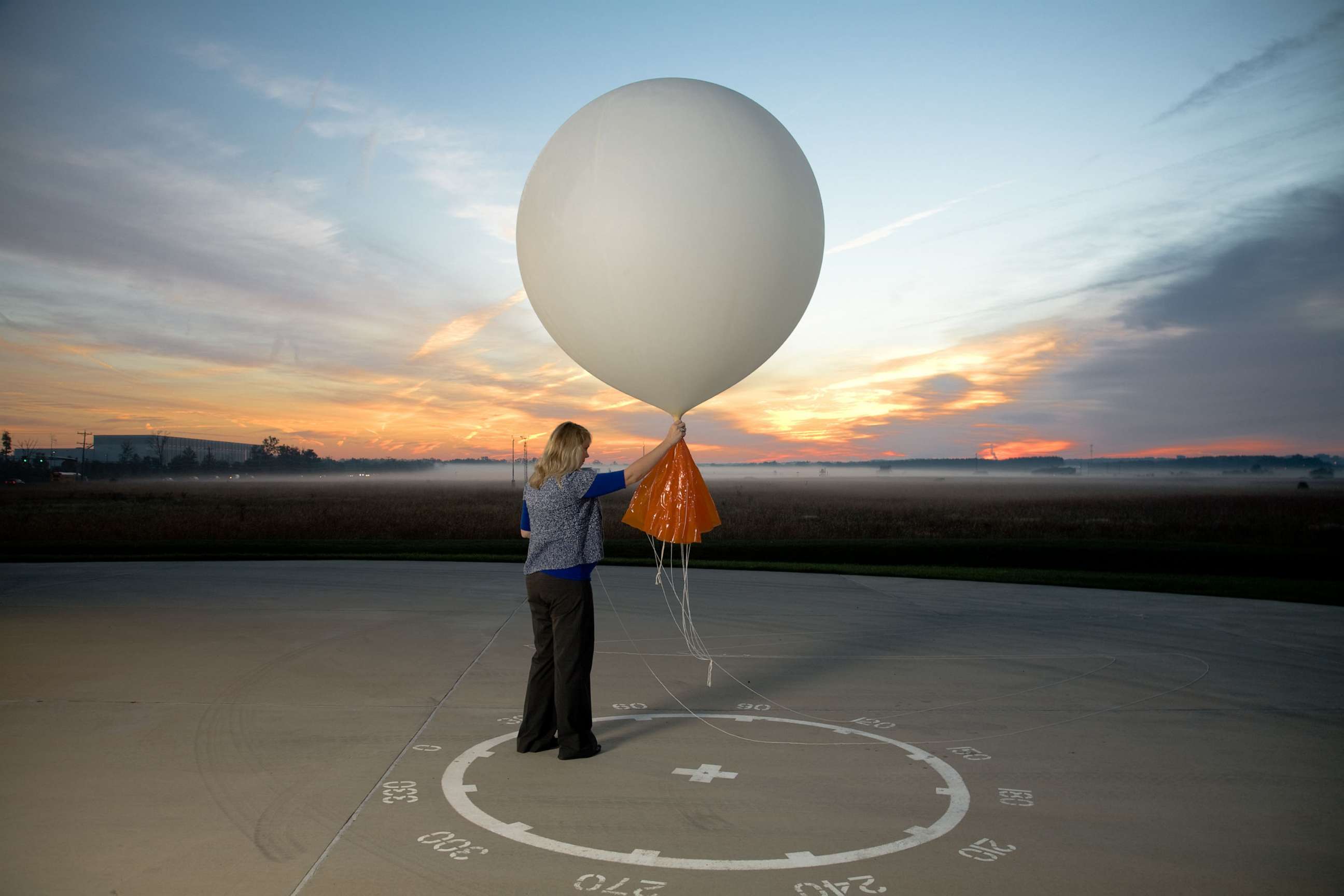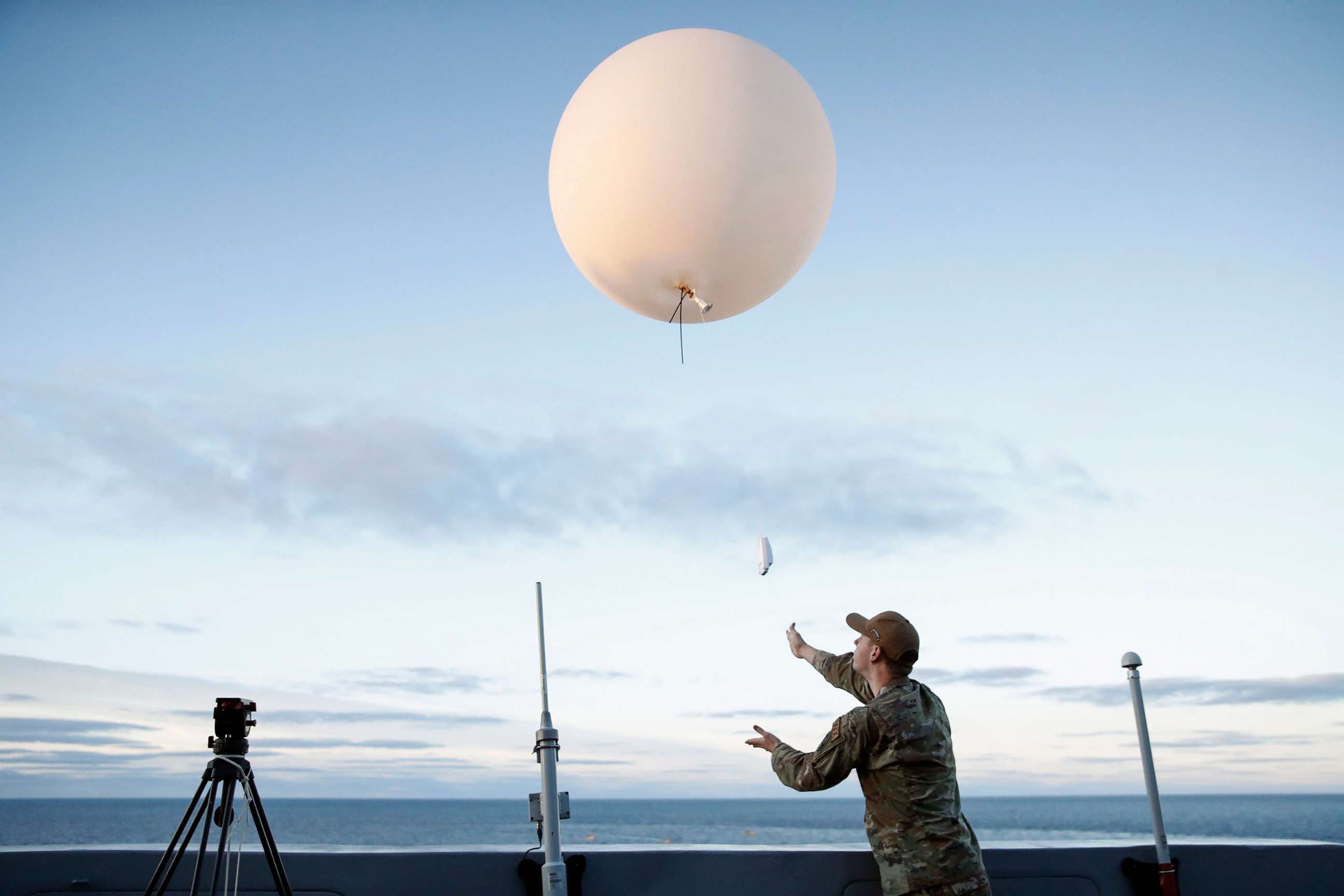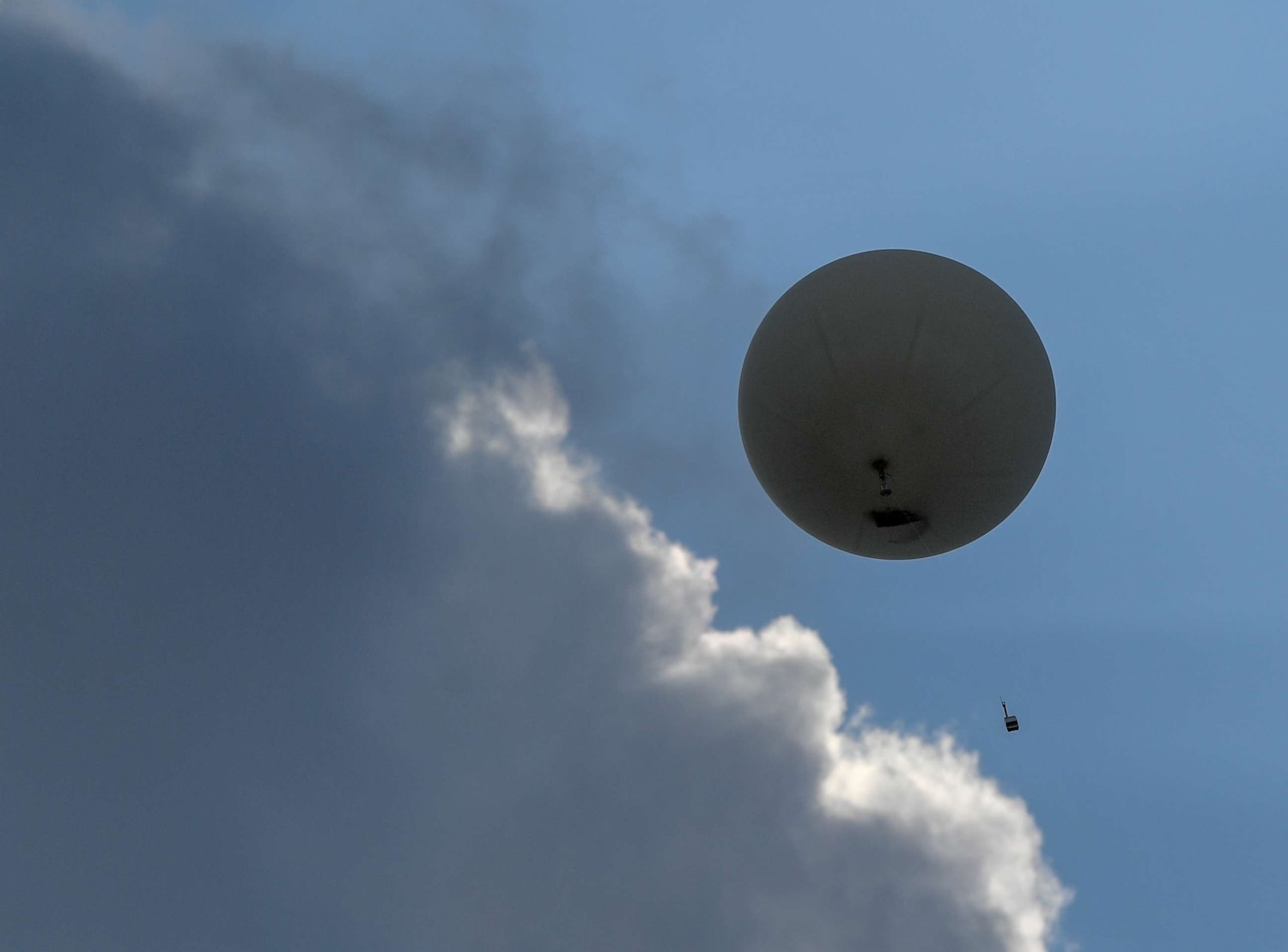With the recent shootdowns of “high-altitude objects,” there’s heightened awareness about what’s flying in U.S. airspace, especially weather balloons.

As it turns out, the skies are crowded.
How many weather balloons are there?
On any given day, nearly 1,800 weather balloons are launched across the world, including 92 here in the U.S. and U.S. territories, according to the National Weather Service.
Each flight lasts around two hours, during which a balloon drifts up to 125 miles and can reach an altitude of 100,000 feet. However, NWS Public Affairs Director Susan Buchanan says 125 miles is unusual.
“While weather balloons can drift as far as 180 miles, they typically travel only 30-35 miles downwind from their launch site,” Buchanan said.

How are weather balloons useful?
According to the NWS, weather balloons are a key tool in forecasting.
Each weather balloon has a device about the size of a shoebox attached to it called a radiosonde. The radiosonde measures pressure, temperature and relative humidity during its flight.
The radiosonde sends data down to monitoring stations every one to two seconds, which also allows researchers to track wind speed and the balloon’s location.
According to ABC News’ meteorology team, one or two missing weather balloons won’t impact your daily forecast. However, many missing balloons could lead to more errors in weather models and forecasts.

Who tracks weather balloons?
The radiosonde allows the researchers operating the weather balloon to track it. Regulations from the FAA require the balloon’s operator to record the position every two hours.
Operators are also required to “provide traffic advisories to all affected aircraft … specifying the balloon’s known or estimated position, direction of movement, and altitude.”
Buchanan confirmed with ABC News Monday evening all weather balloons launched since Friday, Feb. 10 are accounted for.
ABC News aviation analyst and veteran airline captain John Nance said a weather balloon might show up on a radar, but because it doesn’t contain a lot of metal, it is harder for the radar to spot.
“Something slow moving that has very little metal in it will pop up on a regular radar as just a little noise,” Nance said. “In other words you might see it on the sweep and you might not see it for a couple other sweeps and then another sweep [the weather balloon] might pop up again.”

Are weather balloons dangerous for planes?
Weather balloons do pass through the 31,000 – 41,000 commercial airplane cruising altitude range, but are not expected to hover at that range, according to Nance.
“If it’s up there at 60,000 feet or above, there’s really no worry about it conflicting with air traffic unless it starts coming down,” Nance said.
The object shot down Sunday over Lake Huron was said to be floating around 20,000 feet.
“That is definitely right in the middle of air traffic,” Nance said. “You do not want something like that hanging around.”
What happens to a weather balloon?
After about two hours, most weather balloons burst, according to the NWS. The weather balloon can expand to 20 feet in diameter when it reaches bursting altitude.
The radiosonde has a parachute, allowing it to fall back to Earth safely. Each radiosonde also has a mailing bag and instructions on how to return it.
